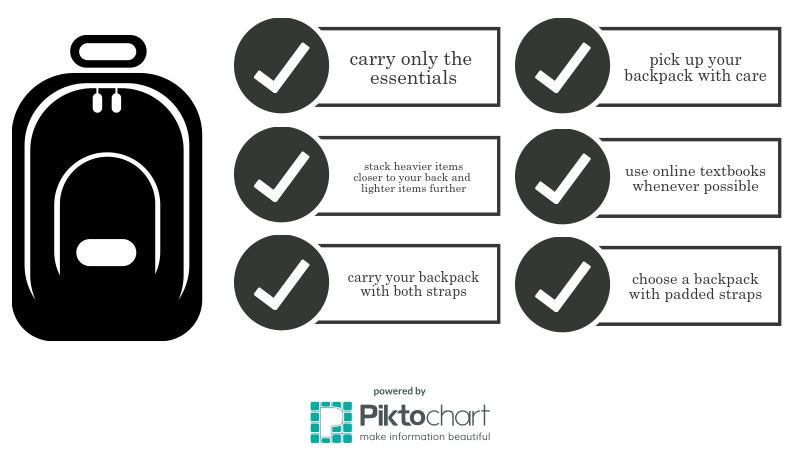We’ve Got Your Back
Some dangers are such a common sight in our daily lives that we ignore them completely. It seems crazy that  something as normal as a high school student’s backpack can actually be a health hazard.
something as normal as a high school student’s backpack can actually be a health hazard.
According to studies done by the American Occupational Therapy Association, students should not carry a backpack that weighs more than 10 percent of their body weight. However, the average backpack weighs just over 20 pounds, which is generally more than 10 percent of the body weight of high school students.
Carrying an overloaded backpack can cause an unnatural curving of the spine because students’ hips and shoulders are being pulled forward to compensate for the extra weight that’s throwing them off balance.
Surprisingly, Wahlert is ahead of the game in combating this issue. Block scheduling is a huge help because students don’t necessarily have to take all of their books home every single night. Students’ laptops are also helpful because they can use textbooks online instead of the big, bulky paper copies.
Most orthopedic surgeons recommend carrying only the items needed for a particular school day at a time and taking anything “extra” out.
Holli Hammerand, ‘18, uses this technique on most days. “I try not to bring stuff if I don’t absolutely need it,” said Hammerand. “I have a bad back anyway and carrying a heavy bag just makes things worse.”
Unfortunately, having a backpack that is too heavy isn’t the only danger; the way backpacks are carried is also a big factor. According to the American Chiropractic Association. students who carry messenger bags or tend to carry their backpack using only one strap reported having more shoulder pain on a single side than did those who carry their bags correctly.
The way that bags are picked up can add to the problem. Students tend to grab a strap of their bag and swing it up onto their shoulder, especially when they’re in a hurry, like after lunch lets out. But, this action, along with straps with no padding or that are too tight, can lead to pinched nerves in the shoulders and neck.
Believe it or not, there’s more. The way that things are packed into a backpack can also make a difference. Placing the heavier items closer to the spine and putting lighter items further out allows for the legs to do more of the work than the muscles in the back. This can take the strain off of the spine and shoulders.
While high schoolers are young and able to bounce back quickly, they might not always be that way. The real danger of backpacks is not back pain now, but real health problems in the long-run. Taking these precautions might seem silly now, but students just might live to regret it if they don’t.




